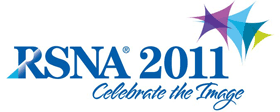
Abstract Archives of the RSNA, 2011
LL-CHS-MO7B
Quantitative Dynamic Contrast-enhanced (DCE) MRI in Patients with Non-Small Cell Lung Cancer (NSCLC): Application of Reference Tissue Method
Scientific Informal (Poster) Presentations
Presented on November 28, 2011
Presented as part of LL-CHS-MO: Chest
Jae-Hun Kim PhD, Abstract Co-Author: Nothing to Disclose
Chin A Yi MD, PhD, Abstract Co-Author: Nothing to Disclose
Julius Chung, Abstract Co-Author: Nothing to Disclose
Eunju Lee, Abstract Co-Author: Nothing to Disclose
Yoo Na Kim, Abstract Co-Author: Nothing to Disclose
Dong Ik Cha MD, Presenter: Nothing to Disclose
Ho Yun Lee MD, Abstract Co-Author: Nothing to Disclose
Kyung Soo Lee MD, PhD, Abstract Co-Author: Nothing to Disclose
To investigate the feasibility of reference tissue method in quantification of DCE-MRI in patients with NSCLC
The IRB approved our study and informed consent was obtained from all patients. We included 19 patients (12 men and 7 women; age range, 40-77; mean age, 60.47 ± 9.94 years) who had biopsy-proven NSCLCs and underwent DCE-MRI. MR signal intensities were converted into contrast media concentrations using variable flip angle method. Concentrations versus time curves were generated by measuring mean concentration value of region of interest (ROI) within the aorta, pulmonary artery, lung cancer, and chest wall muscle (reference tissue) by two independent thoracic radiologists. Quantitative parameter of the volume transfer constant (Ktrans) of lung cancer were computed in two different ways; an arterial input function (AIF) method using extended Kety model and reference tissue method. Ktrans from AIF methods were compared using two different AIFs from aorta and pulmonary artery for the lung cancer and reference tissue. Ktrans from AIF method were converted into Ktrans of lung cancer/ Ktrans of reference tissue ratio and then correlated with relative Ktrans from reference tissue method using Pearson coefficient and compared via Bland Altman plots
The peak of AIF from pulmonary artery showed an earlier peak than that from aorta, but the shape of curve were similar each other. Ktrans using two different AIFs from aorta and pulmonary artery showed strong correlation both in the lung cancer (r=0.8018) and in the reference tissue (r=0.9812). The relative Ktrans from reference tissue method showed strong linear correlation with Ktrans, ratio (Ktrans, tumor / Ktrans, reference) from AIF method using aorta (r=0.8763) and pulmonary artery (r=0.9391). Ktrans between two methods showed good agreement with mean absolute differences of 1.78 ± 1.94 standard deviation.
AIF either from aorta or from pulmonary artery can be used for perfusion analysis using AIF method for the lung cancer. The reference tissue method may be a good alternative to AIF method using extended Kety model to the extent that Ktrans, ratio are sufficient.
AIF is a major source of variability for the quantitative DCE-MRI and sometimes not applicable. Reference tissue method allows us to avoid defining AIF and is comparable to AIF method.
Kim, J,
Yi, C,
Chung, J,
Lee, E,
Kim, Y,
Cha, D,
Lee, H,
Lee, K,
Quantitative Dynamic Contrast-enhanced (DCE) MRI in Patients with Non-Small Cell Lung Cancer (NSCLC): Application of Reference Tissue Method. Radiological Society of North America 2011 Scientific Assembly and Annual Meeting, November 26 - December 2, 2011 ,Chicago IL.
http://archive.rsna.org/2011/11034547.html

